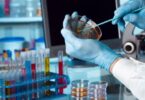Research to incorporate organ technology into a chip, which simulates the microenvironment and aspects of living organs.
Organs on a chip, a platform designed mainly for the production and testing of new medicines as part of drug innovation.
An organ on a chip is a cell culture system that simulates the microenvironment and key functional aspects of living organs on a microscopic scale.
Organs-on-a-chip are different from two-dimensional cell cultures because they do not simulate the microenvironment of cells within an organism and tend to lose their differentiated function. They are also different from three-dimensional cell cultures based on extracellular matrix gels, because these cannot simulate the interfaces between different tissues, the chemical gradients or the mechanical activity that is present in all organs.
The manufacturing of organs on a chip represents obstacles on the microscopic scale and in the difficulty of recreating the natural structure of tissues. Tissue architecture occupies a three-dimensional space and includes multiple different structures, such as the extracellular matrix and different types of cells that interact with each other.
In the technological development of body organs on chips, one of the technical challenges concerns the designation of the types of materials used in their manufacture.
One of the first organs to be reproduced on a chip was the lung. Dongeun Huh, from the Wyss Institute for Biologically Inspired Engineering at Harvard University, participated in an experiment in 2010 that attempted to replicate the interface between alveoli and blood capillaries. This interface was identified as the essential function of the lung. To validate the precision with which this device simulates the biological function of a human lung, the way in which it responded to infections or inflammation was assessed.
Polydimethylsiloxane, or PDMS, is one of the most frequently used materials. It is gas permeable, transparent and flexible, all of which is beneficial to its cell culture applications.
The advantages of PDMS is its biocompatibility, thanks to this its use is recommended in this type of development.
It is possible to create systems that incorporate the minimal function of more than one organ. These types of systems can consist of several chips connected in series to the same solution flow, each simulating a different organ. These integrated systems allow us to more accurately simulate the interconnected reactions that occur in the human body, and can be better predictors of how a drug will work.
Therefore, multiple organs-on-a-chip could provide abilities to observe things that modern technology does not allow. Networks of microfluidic channels are used to mimic organ structure, such as the nephrons of the kidneys.
FONT
https://es.wikipedia.org/wiki/%C3%93rgano_en_un_chip
http://www.ub.edu/senesciencia/noticia/organos-en-un-chip/







